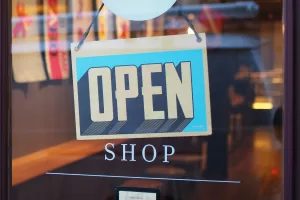
Effective local retail marketing requires more than just great products in today’s competitive market. Success comes from a strategic mix of digital presence, community engagement, and targeted marketing efforts. This guide will help store owners implement proven retail marketing strategies to boost visibility and attract more customers.
Understanding Your Market and Audience
The foundation of successful local retail marketing begins with a deep understanding of your market. Start by researching your target audience’s demographics and shopping habits. Take time to analyze your local competition and identify what makes your store unique. Study the peak shopping hours and seasonal patterns in your area, and clearly define your service area to focus your marketing efforts effectively.
Digital Marketing Essentials
Social Media Strategy
An effective social media presence is crucial for modern retail success. Create a balanced content schedule that includes a good combination of static image posts, reels, and live videos. The timing of your posts matters significantly – while peak engagement often occurs during weekday mornings (8-10 a.m.), lunch hours (12-2 p.m.), and evenings (6-9 p.m.), it is essential to research your specific audience’s engagement patterns. To maximize visibility, repurpose your content as stories after posting.
Organize your content calendar around themed days to maintain consistency and interest. For example, use Mondays to showcase new arrivals, Tuesdays to promote upcoming events, Fridays to highlight best sellers, and Saturdays to feature new inventory. This structure helps create anticipation and gives customers reasons to check back regularly.
Local SEO and Online Presence
Your digital footprint needs constant attention to remain effective. Maintain an up-to-date Google Business Profile with current business hours, fresh photos of products and your store, and regular responses to customer reviews. Use location-specific hashtags and geotags in your social posts to increase local visibility. Your website should always reflect your current inventory and store location information.
Email Marketing Best Practices
Email marketing remains a powerful tool for local retailers building customer relationships. Develop a strategic approach to collecting email addresses through in-store checkout, website forms, and social media promotion. When designing your email campaigns, maintain a reasonable frequency of no more than two emails per month. Focus on providing value through monthly or seasonal updates, exclusive offers for subscribers, and clear calls-to-action in every message.
Community Engagement and Events
Creating stronger local connections happens through active community participation. Get involved in local festivals and markets, and look for opportunities to partner with nearby businesses. Consider hosting in-store events and workshops to bring people into your space. Differentiate your store by offering special services such as personal shopping appointments, VIP shopping hours, style consultations, and seasonal celebration events.
Advertising Strategy
A well-planned advertising approach can significantly impact your store’s success. When using Facebook and Instagram ads, start with a test budget of $10 per day for seven days. Implement A/B testing with different images and copy to determine what resonates with your audience. Target specific demographics within your service area and focus on creating lookalike audiences based on similar successful businesses.
For direct mail campaigns, focus on clean, clear designs with prominent branding. Include compelling offers, such as first-purchase discounts, and carefully target specific neighborhoods within your radius. Track response rates diligently to measure your return on investment.
Measuring Success
Success in retail marketing requires careful attention to key performance indicators. Monitor your foot traffic patterns, social media engagement rates, and email campaign performance. Track conversion rates from various marketing channels and correlate sales data with specific marketing activities. Pay attention to customer feedback and reviews as they provide valuable insights into your marketing effectiveness.
Creating Sustainable Growth
Sustainable growth in local retail comes from consistent effort and careful attention to detail. Maintain regular posting schedules and keep your branding uniform across all channels. Respond promptly to customer engagement and stay active in your community. Monitor which marketing tactics drive results and be prepared to adjust your strategies based on performance data.
The customer experience should remain at the center of all your retail marketing strategies. Invest in staff training to ensure excellent customer service, create a welcoming store atmosphere, and maintain quick response times to customer feedback.
Taking Action
These retail marketing strategies will help you build a stronger presence in your local market. Begin with foundational marketing elements, carefully measure your results, and gradually expand your efforts as you learn what works best in your market.
The key to long-term success in local retail marketing lies in setting clear goals for each marketing activity, regularly tracking performance metrics, engaging authentically with your community, and staying adaptable to changing market conditions. Remember that building a strong local retail presence takes time and consistent effort, but the results are worth the investment.
 Do you find this article helpful or wish to discuss it further? Contact me at [email protected] or read more about me.
Do you find this article helpful or wish to discuss it further? Contact me at [email protected] or read more about me.
Local Retail Marketing Strategies: A Complete Guide for Store Owners

Effective local retail marketing requires more than just great products in today’s competitive market. Success comes from a strategic mix of digital presence, community engagement, and targeted marketing efforts. This guide will help store owners implement proven retail marketing strategies to boost visibility and attract more customers.
Understanding Your Market and Audience
The foundation of successful local retail marketing begins with a deep understanding of your market. Start by researching your target audience’s demographics and shopping habits. Take time to analyze your local competition and identify what makes your store unique. Study the peak shopping hours and seasonal patterns in your area, and clearly define your service area to focus your marketing efforts effectively.
Digital Marketing Essentials
Social Media Strategy
An effective social media presence is crucial for modern retail success. Create a balanced content schedule that includes a good combination of static image posts, reels, and live videos. The timing of your posts matters significantly – while peak engagement often occurs during weekday mornings (8-10 a.m.), lunch hours (12-2 p.m.), and evenings (6-9 p.m.), it is essential to research your specific audience’s engagement patterns. To maximize visibility, repurpose your content as stories after posting.
Organize your content calendar around themed days to maintain consistency and interest. For example, use Mondays to showcase new arrivals, Tuesdays to promote upcoming events, Fridays to highlight best sellers, and Saturdays to feature new inventory. This structure helps create anticipation and gives customers reasons to check back regularly.
Local SEO and Online Presence
Your digital footprint needs constant attention to remain effective. Maintain an up-to-date Google Business Profile with current business hours, fresh photos of products and your store, and regular responses to customer reviews. Use location-specific hashtags and geotags in your social posts to increase local visibility. Your website should always reflect your current inventory and store location information.
Email Marketing Best Practices
Email marketing remains a powerful tool for local retailers building customer relationships. Develop a strategic approach to collecting email addresses through in-store checkout, website forms, and social media promotion. When designing your email campaigns, maintain a reasonable frequency of no more than two emails per month. Focus on providing value through monthly or seasonal updates, exclusive offers for subscribers, and clear calls-to-action in every message.
Community Engagement and Events
Creating stronger local connections happens through active community participation. Get involved in local festivals and markets, and look for opportunities to partner with nearby businesses. Consider hosting in-store events and workshops to bring people into your space. Differentiate your store by offering special services such as personal shopping appointments, VIP shopping hours, style consultations, and seasonal celebration events.
Advertising Strategy
A well-planned advertising approach can significantly impact your store’s success. When using Facebook and Instagram ads, start with a test budget of $10 per day for seven days. Implement A/B testing with different images and copy to determine what resonates with your audience. Target specific demographics within your service area and focus on creating lookalike audiences based on similar successful businesses.
For direct mail campaigns, focus on clean, clear designs with prominent branding. Include compelling offers, such as first-purchase discounts, and carefully target specific neighborhoods within your radius. Track response rates diligently to measure your return on investment.
Measuring Success
Success in retail marketing requires careful attention to key performance indicators. Monitor your foot traffic patterns, social media engagement rates, and email campaign performance. Track conversion rates from various marketing channels and correlate sales data with specific marketing activities. Pay attention to customer feedback and reviews as they provide valuable insights into your marketing effectiveness.
Creating Sustainable Growth
Sustainable growth in local retail comes from consistent effort and careful attention to detail. Maintain regular posting schedules and keep your branding uniform across all channels. Respond promptly to customer engagement and stay active in your community. Monitor which marketing tactics drive results and be prepared to adjust your strategies based on performance data.
The customer experience should remain at the center of all your retail marketing strategies. Invest in staff training to ensure excellent customer service, create a welcoming store atmosphere, and maintain quick response times to customer feedback.
Taking Action
These retail marketing strategies will help you build a stronger presence in your local market. Begin with foundational marketing elements, carefully measure your results, and gradually expand your efforts as you learn what works best in your market.
The key to long-term success in local retail marketing lies in setting clear goals for each marketing activity, regularly tracking performance metrics, engaging authentically with your community, and staying adaptable to changing market conditions. Remember that building a strong local retail presence takes time and consistent effort, but the results are worth the investment.
![]() Do you find this article helpful or wish to discuss it further? Contact me at [email protected] or read more about me.
Do you find this article helpful or wish to discuss it further? Contact me at [email protected] or read more about me.